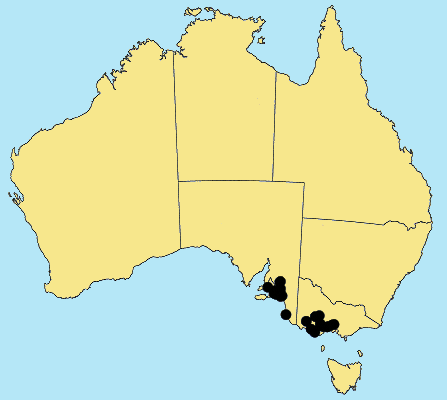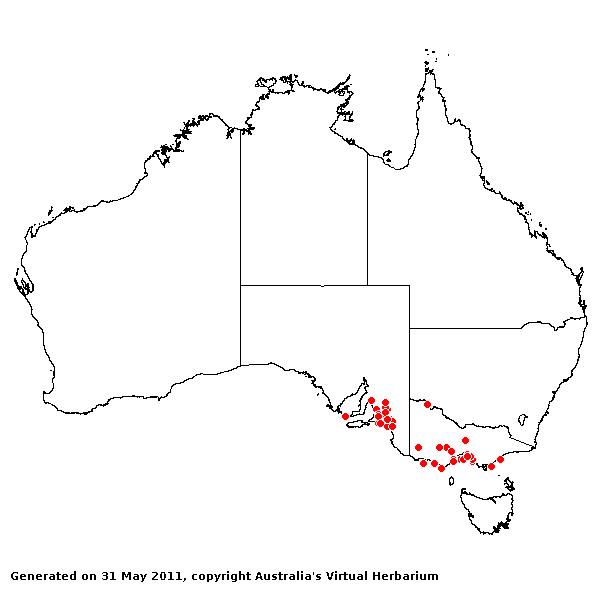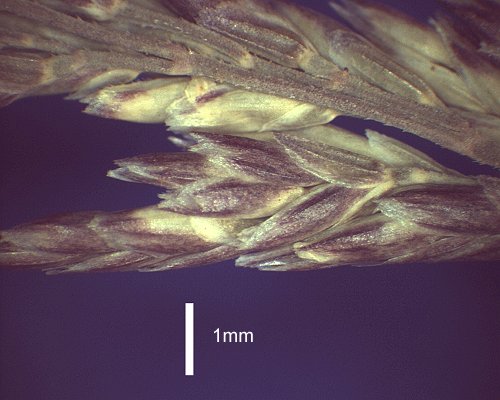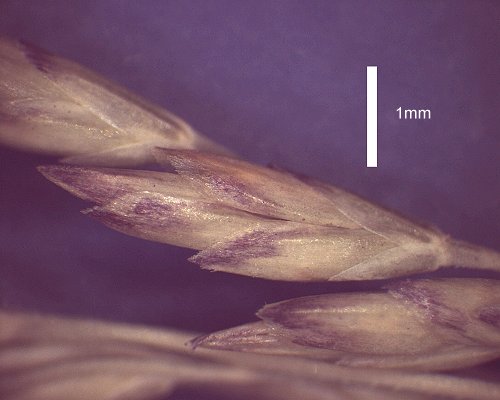Puccinellia fasciculata* (Torr.) E.P.Bickn. Bull. Torrey Bot. Club 35: 197
(1908).
Classification. (GPWG 2001) : Subfamily Pooideae.
Tribe Poeae.
Basionym and/or
Replacement Name: Poa fasciculata
Torr., Fl. N. Middle United States 1: 107 (1823).
Type of Basionym or
Protologue Information: HT: J. Torrey, USA: New York: salt marsh
near New York (NY-TORR; IT: US- (fragm. ex NY-TORR & photo)).
Key references
(books and floras): [2002] D.Sharp & B.K.Simon, AusGrass, Grasses of
Australia, [2006] J.Jessop, G.R.M.Dashorst, F.M.James, Grasses of South
Australia (164), [2009] A.Wilson (ed.). Flora of Australia, Vol 44A.
Poaceae 2 (272).
Illustrations:
[2006] J.Jessop, G.R.M.Dashorst, F.M.James, Grasses of South Australia (164, fig. 116).
Habit.
Perennial. Culms erect or geniculately ascending, 6–60 cm tall, 1–3 -noded.
Leaf-sheaths smooth. Ligule an eciliate membrane, 1–3 mm long, obtuse or acute.
Leaf-blades linear, flat or conduplicate, 2–16 cm long, 1.5–5 mm wide.
Leaf-blade surface scabrous.
Inflorescence.
Inflorescence compound, a panicle. Panicle lanceolate or oblong or ovate,
2.5–18 cm long.
Spikelets.
Spikelets pedicelled. Fertile spikelets many flowered, with at least 2 fertile
florets (3–8), comprising 3–8 fertile floret(s), with diminished florets at the
apex, elliptic or oblong or ovate, laterally compressed, 3.4–6.8 mm long.
Glumes. Glumes
dissimilar. Lower glume ovate, membranous, much thinner on margins, without
keels or keeled, 1 -nerved. Upper glume ovate, 1.4–1.9 mm long, membranous,
without keels, 3 -nerved.
Florets.
Fertile lemma 1.8–2.6 mm long, without keel, 5 -nerved. Lemma surface
indumented. Lemma apex erose, mucronate. Palea 2 -nerved. Anthers 3. Grain 1.5
mm long.
Continental
Distribution: Europe, Africa, Australasia, and North America.
Australian
Distribution: South Australia, Victoria.
South Australia:
Murray, Yorke Peninsula, South-eastern. Victoria: Gippsland Plain,
Midlands, Otway Plain, Volcanic Plain.
Notes.
A number of specimens have a relatively long and acute ligule, unlike the ligule
usually described for P. fasciculata. The specimens do not differ
significantly in any other feature.
Introduced. Commonly
in saline areas near water, e.g. salt marsh or stream, mostly near the coast.
Flowers (Apr.-)Sept.-Feb. Fruits Nov.-Apr.





